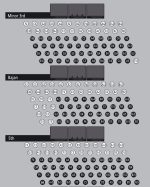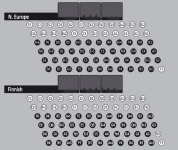I am sure there are as many opinions as forum members, but having realised my Roland can do free bass, I'm thinking to try free bass.
Mostly I play folk tunes, and Stradella works great for those. But at Christmas I have a couple of carol singing gigs where free bass may be better - last year I played bass lines on the root and third bass rows as I wasn't skilled enough to do the chords.
Anyway, any suggestions as to which of these is more common, more suited to a beginner, more suited to traditional church music?


Mostly I play folk tunes, and Stradella works great for those. But at Christmas I have a couple of carol singing gigs where free bass may be better - last year I played bass lines on the root and third bass rows as I wasn't skilled enough to do the chords.
Anyway, any suggestions as to which of these is more common, more suited to a beginner, more suited to traditional church music?


